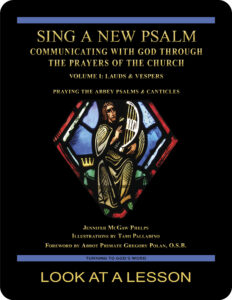prayer
 In this week’s liturgy, the readings focus on Jesus teaching his disciples about prayer. In the Gospel According to Luke 11:1–13 (NABRE), Jesus has been discussing mistakes people make when they pray. As a remedy, Jesus offers the Lord’s Prayer, which Catholics often refer to as the “Our Father.”
In this week’s liturgy, the readings focus on Jesus teaching his disciples about prayer. In the Gospel According to Luke 11:1–13 (NABRE), Jesus has been discussing mistakes people make when they pray. As a remedy, Jesus offers the Lord’s Prayer, which Catholics often refer to as the “Our Father.”
What do you think praying meant to those with whom Jesus was talking? What do you think that it means to Jesus? What do you think that Jesus intended the “Our Father” to accomplish for his disciples? What effect does praying the “Our Father” have on your own spiritual life?
The Greek word used here for prayer is προσεύχομαι (proseuchomai), a compound form of the verb εύχομαι (euchomai), which also means “I pray.” The difference between proseuchomai and euchomai comes from the prefix προσ- (pros-). This prefix adds the implication of direction or motion toward to the idea of prayer, so more than simply being a request for a particular desire or outcome, the Greek concept of prayer is about how to address God.
In light of these Greek conceptual underpinnings, we see that the Lord’s Prayer in the Gospel According to Luke serves as a formula that defines the way we approach God. How do you approach or address God? How might the “Our Father” seen in this light inform your relationship with God? What advantages do you see to using a formulaic approach to speaking with God? What are some disadvantages? What can you do to prevent the “Our Father” from becoming a rote recitation of words instead of a heartfelt plea to God?
related topics: daily needs; prayer as barter; temptation; test
you also may like Volume I of our Psalms study
 Sing a New Psalm: Communicating with God Through the Prayers of the Church—Volume I: Lauds & Vespers provides an in-depth look at Psalms prayed in morning and evening liturgies. (Volume II, set for publication in 2024, looks at Vigils, Day Prayer & Compline.) The study is based on The Abbey Psalms and Canticles, a translation prepared by the Benedictine monks of Conception Abbey and published by the United States Conference of Catholic Bishops (USCCB). Click on the book’s cover to view a sample lesson.
Sing a New Psalm: Communicating with God Through the Prayers of the Church—Volume I: Lauds & Vespers provides an in-depth look at Psalms prayed in morning and evening liturgies. (Volume II, set for publication in 2024, looks at Vigils, Day Prayer & Compline.) The study is based on The Abbey Psalms and Canticles, a translation prepared by the Benedictine monks of Conception Abbey and published by the United States Conference of Catholic Bishops (USCCB). Click on the book’s cover to view a sample lesson.
 Click on the picture of the statue of Moses with horns (above) to learn more about Lost in Translation. A new entry is archived each Monday. Contact us to receive Lost in Translation by email every week. You may use any of the contact links on our website to ask Matthew a question.
Click on the picture of the statue of Moses with horns (above) to learn more about Lost in Translation. A new entry is archived each Monday. Contact us to receive Lost in Translation by email every week. You may use any of the contact links on our website to ask Matthew a question.
